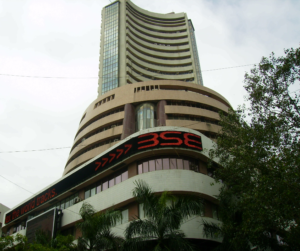Welcome to the thrilling world of Indian stock market! Whether you are an experienced trader with years of expertise or a novice investor wishing to dabble in the Indian stock market, one thing is for sure: the financial world may frequently appear to be a confusing and daunting maze full of foreign words and ideas. But worry not! With the help of this article, you should be able to make more confident and well-informed financial decisions by navigating the maze of stock market lingo.
Investing in stocks can be a lucrative venture that offers chances to increase one’s wealth and finances. But in order to be successful in this dynamic and always evolving field, it’s essential to comprehend the terms and ideas that
Greetings from the thrilling world of stocks and markets! Whether you are an experienced trader with years of expertise or a novice investor wishing to dabble in the Indian stock market, one thing is for sure: the financial world may frequently appear to be a confusing and daunting maze full of foreign words and ideas. But worry not! With the help of this article, you should be able to make more confident and well-informed financial decisions by navigating the maze of stock market lingo.
Investing in stocks can be a lucrative venture that offers chances to increase one’s wealth and finances. But in order to be successful in this dynamic and always evolving field, it’s essential to comprehend the terms and ideas that the markets. This article will serve as your gateway, demystifying some of the most common and perplexing terms used in the Indian stock market.
1. Sensex and Nifty
Sensex:
Bombay Stock Exchange (BSE) uses the “Sensitive Index,” or “SENSEX,” as its benchmark stock market index. It functions as a gauge of the Indian stock market’s general health and performance. The top 30 businesses that are listed on the BSE and represent a range of Indian economic sectors make up SENSEX. Larger companies have a greater influence on the movement of the index since the value of the index is determined by a free-float market capitalization-weighted approach. Tracking economic trends and investor sentiment in India is crucial, and SENSEX offers investors and analysts a concise overview of the performance of the Indian stock market.

Nifty:
The National Stock Exchange Fifty, or NIFTY, is one of the most popular and often followed stock market indices in India. Based on market capitalization, it demonstrates the performance of the top 50 listed companies on the National Stock Exchange (NSE). NIFTY provides investors insightful information about the performance of important industries and businesses and acts as an indicator of the general health of the Indian stock market. It is a key factor in directing investment choices and is frequently utilized as a standard for a range of financial products, such as exchange-traded funds (ETFs) and mutual funds. Anyone trying to make sense of the Indian stock market must comprehend the swings and patterns of the NIFTY.
2. Bull Market and Bear Market
Bull Market:
A financial market that has experienced a prolonged run of rising stock prices and positive investor mood is known as a bull market. Investor confidence is high and the widespread consensus is that the economy is robust and will keep expanding during a bull market. This upbeat attitude encourages more purchasing, which raises stock prices and starts a positive feedback loop. Bull markets are usually linked to strong corporate earnings, low unemployment, and economic expansion. Investor participation in the stock market rises as a result of their common perception that these times present opportunities to profit from possible capital gains. Bull markets offer investors the chance to significantly increase their portfolios over the course of months or even years. But it’s important to keep in mind that bull markets.are cyclical, and they are inevitably followed by bear markets, which are characterized by declining stock prices and pessimism. As such, prudent investors must exercise caution and maintain a diversified portfolio to protect their investments during market downturns.
Bear Market:
Within the finance industry, a prolonged period of falling stock prices and general market pessimism is referred to as a “bear market.” Investor confidence declines and a general atmosphere of uncertainty and pessimism prevails in a bear market. In contrast, during a bull market, optimism is high and stock prices are rising. A decline in the value of major stock indices of at least 20% from their recent highs is a hallmark of bear markets. Numerous causes, such as an economic recession, rising inflation, geopolitical tensions, or just a correction following an extended period of growth, can contribute to these market downturns. When the market is down, investors frequently take protective measures, such cutting back on their equity exposure and increasing investments in assets considered safer, like bonds or cash. Bear markets can be challenging for both individual investors and institutions, as they can erode wealth and disrupt financial stability. It is crucial for investors to have a diversified portfolio and a long-term perspective to weather the storm of a bear market.
3. IPO (Initial Public Offering)
An important financial event known as an Initial Public Offering (IPO) occurs when a private business chooses to go public by first making its shares available to the general public. The first of several crucial steps in this procedure is choosing the investment banks that will support and underwrite the offering. The company’s development prospects, business model, and financials are carefully examined in order to arrive at a suitable valuation during the initial public offering (IPO). The company’s shares are made available to investors through a stock market after the IPO is approved by regulatory bodies, giving them the chance to invest in the business. Companies that want to raise money for a variety of reasons, such financing expansion, paying off debt, or giving existing shareholders liquidity, frequently consider initial public offerings (IPOs). They also serve as a means for early investors and founders to monetize their investments. IPOs can have a significant impact on a company’s visibility, access to capital, and overall financial trajectory, making them a crucial milestone in the lifecycle of many businesses.
4. Demat Account
- An acronym for “dematerialized account,” or “demat account,” is a type of financial instrument that Indian investors use to hold and trade securities like mutual funds, equities, and bonds online. It acts as a digital depository for these financial assets, taking the place of the actual bond and share certificates that were formerly needed to prove ownership. The way investors manage their money has been completely transformed by demat accounts, which have improved convenience, security, and efficiency. Investors can purchase and sell stocks online with a demat account, doing away with the requirement for physical paperwork and lowering the possibility of theft or loss. Demat accounts also provide a consolidated view of a person’s investment portfolio, which facilitates holdings tracking and management. They are now an essential component of the Indian financial market, providing investors with a seamless and paperless means of participating in the stock and bond markets.
5. SEBI
- The primary regulatory authority in the Indian financial sector is the Securities and Exchange Board of India (SEBI), which was founded in 1988 with the goal of supervising and controlling the nation’s capital and securities markets. Protecting investor interests and ensuring the efficient and equitable operation of the securities markets are SEBI’s main goals. It accomplishes this by developing and putting into effect a number of rules and policies that control how brokers, mutual funds, stock exchanges, and listed businesses behave. In order to maintain accountability and openness in the Indian financial markets, SEBI is essential. It oversees insider trading, controls the issue and trading of securities, and encourages investor awareness and education. Additionally, SEBI also has the authority to investigate and take punitive action against any violations of its regulations, which helps maintain market integrity and investor confidence.
- In order to improve the effectiveness and competitiveness of India’s capital markets, SEBI has implemented a number of initiatives and reforms over the years. These include the adoption of the corporate governance code, the dematerialization of securities, and the advent of computerized trading. India’s rise as a thriving and alluring location for both domestic and foreign investors is partly attributable to SEBI’s ongoing efforts to modernize and fortify the regulatory framework.
- SEBI is an essential component of the Indian financial system, protecting investor interests while ensuring the securities markets run efficiently and equitably. Its dedication to investor protection and regulatory excellence has been essential in building trust in the Indian financial markets and accelerating economic growth.
6. Portfolio Diversification
- In the Indian setting, portfolio diversification—which entails distributing one’s investments over a range of assets to lower risk and improve long-term returns—is a critical investing strategy. Investors can reduce potential losses and achieve more stable growth by diversifying their portfolio, especially in India where the financial markets can be erratic and unpredictable. Typically, this strategy entails investing in a variety of asset classes across different sectors and industries within the Indian economy, including equities, bonds, real estate, and commodities. Investors can lessen their exposure to the performance of a single asset or sector by doing this, which can be advantageous in a nation like India where economic sectors are prone to abrupt volatility. By attempting to balance risk and return, diversification makes sure that investors have a well-rounded portfolio that can weather market turbulence and capitalize on growth opportunities. Overall, portfolio diversification is a prudent strategy for Indian investors looking to secure their financial future while navigating the dynamic landscape of the Indian financial markets.
7. Blue-Chip Stocks
- In the world of investing, the term “blue-chip stocks” is frequently used to refer to shares of renowned, well-established businesses with a long history of reliable performance. In the Indian context, blue-chip stocks are usually held by market leaders and corporations that are well-established in their respective industries. These businesses are an essential aspect of the Indian stock market because they are frequently included in benchmark indices like the Sensex and Nifty 50. Because blue-chip stocks have a track record of withstanding economic downturns and paying out dividends on a consistent basis, investors view them as reasonably secure investments. These businesses frequently have robust balance sheets, sizable market capitalization, and a track record of providing dividend payments to shareholders. Nevertheless, blue-chip stocks can provide stability and long-term growth potential, it’s essential to note that they may not offer the same level of rapid capital appreciation as smaller, more volatile stocks. Nevertheless, they remain a cornerstone of many investment portfolios, serving as a reliable foundation for wealth preservation and growth in the Indian market.
8. Dividend
- A dividend is a portion of a company’s earnings that is distributed to its shareholders. Indian companies with a consistent profit history often pay dividends.
9. Market Capitalization
- This term refers to the total market value of a company’s outstanding shares. It is calculated by multiplying the current market price of the company’s stock by its total number of outstanding shares.
10. FII and DII
- FII (Foreign Institutional Investor): These are investors or investment companies registered in a country outside India and investing in Indian markets.
- DII (Domestic Institutional Investors): These are Indian institutional investors, like mutual funds, insurance companies, and pension funds, investing in the Indian market.
11. Derivatives: Futures and Options
- Futures: A financial contract obligating the buyer to purchase an asset or the seller to sell an asset at a predetermined future date and price.
- Options: Financial derivatives that give the buyer the right, but not the obligation, to buy or sell an asset at an agreed-upon price and date.
12. Circuit Breakers
- These are regulatory measures to temporarily halt trading on an exchange to curb panic-selling. It’s a mechanism to check extreme volatility in markets.
13. PE Ratio (Price to Earnings Ratio)
- This is a measure to value a company by dividing the current market price of its stock by its earnings per share (EPS). It indicates how much investors are willing to pay per rupee of earnings.
Conclusion
Understanding these terms is crucial in making informed decisions and navigating the complexities of the Indian stock market. As you become more familiar with these terms, you’ll find yourself more comfortable and confident in your investment journey. Happy investing!













